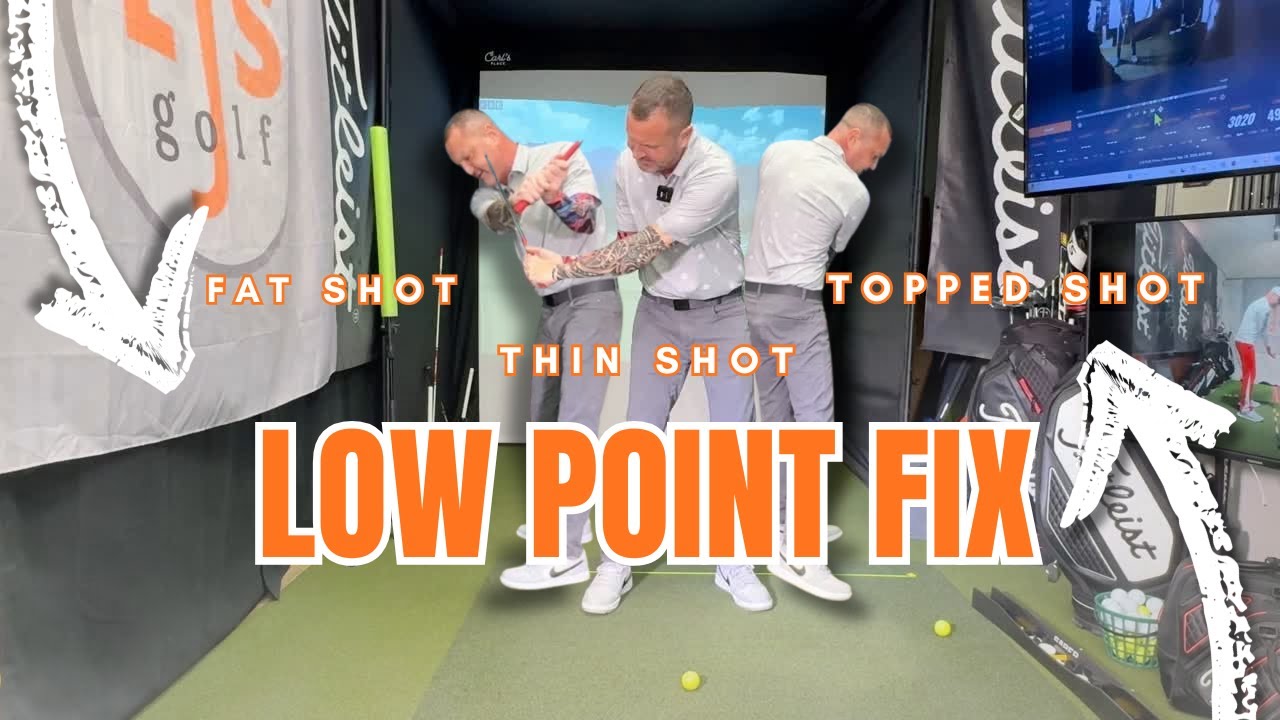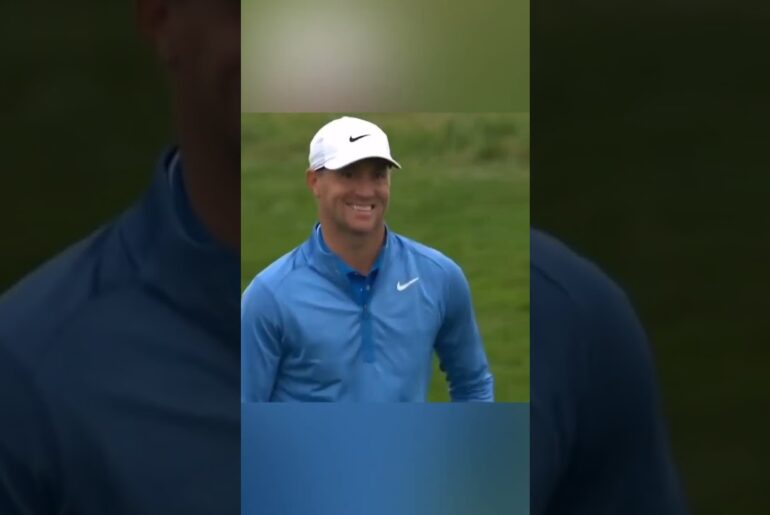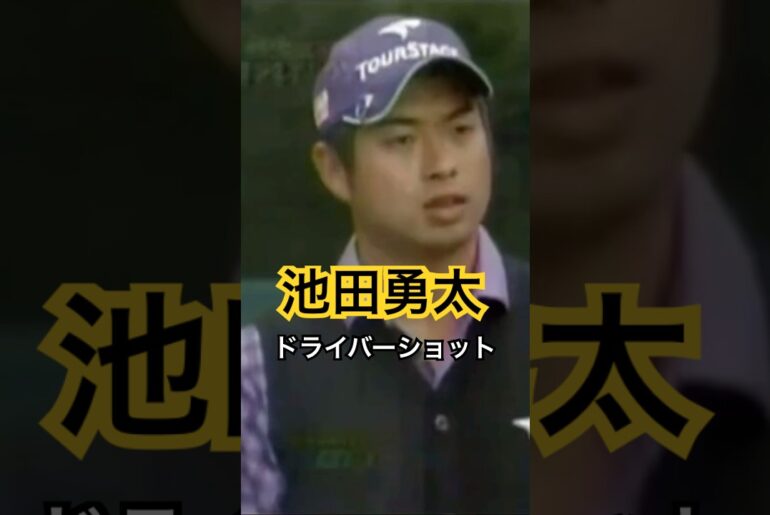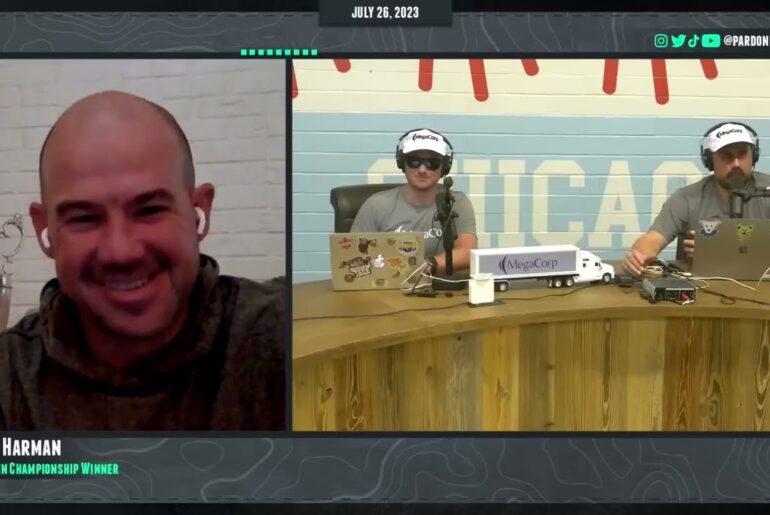⛳ Get my free DRILLS guide by going to https://ejsgolf.com/get-16-drills
🏌️♂️Are you tired of hitting thin shots, fat shots, or even topping the ball? You’re not alone—this is one of the most common struggles in golf. The truth is, it all comes down to one thing: low point control. Every golf swing has an arc, and the lowest point of that arc determines if you’ll strike the ball clean or chunk it.
🚶♀️In this video, I’ll walk you through exactly how professionals keep their low point within half an inch, compared to amateurs who can be off by 2 to 8 inches per swing. If you’ve ever wondered why your contact feels inconsistent, this is the missing link.
🔑 Here’s what you’ll learn in this lesson:
✅ Low Point Control – Why pros are consistent and amateurs struggle.
✅ Weight Shift – Stop starting from the back foot and re-center by transition.
✅ Head Position – Forget “keep your head down” and copy the structure of the best.
✅ Drills – Use tees, short swings, and impact bags to learn the feels needed.
✅ Fix Topping – Move your low point forward to compress the ball like a pro.
🚀 Why this matters:
✅ If you can master your low point, you’ll:
✅ Eliminate thin, fat and topped shots.
✅ Strike the ball first, then the turf—every single time.
✅ Build consistency in your swing that translates to lower scores.
✅ Finally experience the satisfying compression and distance you see on TV.
Stop guessing and start mastering the science of better golf. Practice these drills, take them to the range, and let me know in the comments how much farther and cleaner you’re hitting it after working on your low point control.
▻ Get my free DRILLS guide by going to https://ejsgolf.com/get-16-drills◅
Please subscribe to my channel as well as give this a like and please leave a comment.
Youtube: @ejsgolf
Facebook: @EJSGolf
Tiktok: @ejs_golf
IG: @coacherikschjolberg
Kindly,
𝗖𝗼𝗮𝗰𝗵 𝗘𝗿𝗶𝗸 𝗦𝗰𝗵𝗷𝗼𝗹𝗯𝗲𝗿𝗴
The Science of Better Golf
𝗦𝗰𝗼𝘁𝘁𝘀𝗱𝗮𝗹𝗲 𝗚𝗼𝗹𝗳 𝗟𝗲𝘀𝘀𝗼𝗻𝘀
𝗢𝗻𝗹𝗶𝗻𝗲 𝗚𝗼𝗹𝗳 𝗟𝗲𝘀𝘀𝗼𝗻𝘀
EJSGolf.com
𝟰𝟴𝟬-861-9370
#GolfTips #GolfDrills #Lowpoint #ejsgolf #linksoul #ScottsdaleGolfLessons #simturf
Fat shot, thin shot, fat shot. Does that sound familiar? Today, I’m going to show you how you can stop doing that. How you can be more like the tour professionals that you watch on TV. Hi, I’m Eric Sch with EJS Golf and the science of better golf. [Music] This is number one to me. This is low point control. Okay, when you look at professionals, they are able to be within 0.5 of an inch. Look at amateurs, they’re all over the board. I mean, we can see 2 4 6 8 in difference between low points each swing. Okay, let’s talk about what low point is simply really quick. Okay, so every golf swing has some it’s it’s got some kind of arc, right? And at that bottom of the arc is our lowest point. I’m going to be talking today about everything that’s on the ground. Okay, now a couple caveats to understand before we do this and I show you the drills to work on this to make you what I call a ball striking machine. We have to understand, you know, a couple things here about what we can do, what we can’t do, but we need to understand like this is the important part of the game. This is the number one metric I use for golfers to rate how they are as ball strikers. Knowing the pros are hitting within half an inch up in here. Now, how hard you swing your club speed matters about how far your low point’s going to be forward because if I, you know, swing only 70 m per hour, I can’t have a low point up here with shaft like this. I’ll never get off the ground. It’s going to have to be closer towards the ball. But let’s talk about just the average here and say, okay, you are you have a pretty good speed with seven iron. You’re 88 90. We’re gonna think about four inches ahead as our lowest point. Okay? So the lowest point if you think about it is going to be something like this. So I talk to my students a lot about this about impact being not here. We shouldn’t be focusing on this. We should be focused on up here. This is our lowest point for impact and going, how do I get to this, not here? This is going to make us feel this is going to make us get that hit effect. And you’re going to see a lot of this type stuff. A couple caveats too that I said for this that will not allow this to work. Will never hit up here. If you are one of the massive 70 80% of golfers that swing like this, they take their back swing, they’re on this back foot trying to start their down swing from here. I think it’s probably got to be oh, I don’t know the exact number, but I think it’s probably at least 80% are like this and they’re trying to start down from this back foot and they wonder why they can never get to a good impact like this. Folks, I have mirrors in front of me and on the side I’m always looking. You have to get reentered by the time you get to P4. the transition. Okay. So, if you’re going to shift off a little bit this way, then get back over here. Now, notice the difference in that. I want you to notice the difference what I look like from here on the back foot. Look at this. And imagine me just take a snapshot in your mind of this here and say, how would that guy get from that to here? Now, I want to show you the same thing. I’m going to kind of shift out here again, but I’m going to kind of I’m going to go back this way. Now, if you take a snapshot of this right here, go okay, look at that. Go. Do you can you picture me going from here to this? I think you can, right? That’s what’s so different. So, we have to have that part down first. Okay. Now, let’s talk about low point in general. So, right here, I love these teac claws, but you can use you can get them discounted on my website. You can also use um you know, anything. You can go in the graphs and just kind of mark it or whatever. But, let’s become real proficient at first of just landing in front. Okay? Now, with real little swings, I have a mirror here because the key is this. I see people try to do this when they try to hit. They’ll go like this and they’ll get everything will slide forward, chest over here. Head will be all the way this far up. We don’t have to look at the golf ball. We eyes don’t have to see it when we hit it. Like somebody says, you’ll top it because if you don’t watch it, the last thing I heard is I saw a guy in a cart, his wife was hitting her girlfriend or whatever the other day. He goes, “You keep your head down. You watch that ball. I’ll watch the ball. Don’t look up at all.” Guess what kind of swing I saw? Okay. So, structurally, we want our head when we go at impact to be somewhere like here. But we could be looking this way. Anukica Sornstone, David Dval, two of the best golfers of all time. They were like this. We want structure in our head. So, I want my head to be here when I hit. I don’t want it up here. I don’t want it back there. That’s all it is. It’s not to watch the ball. So, if you’ve been told that lie because you topped or you picked your head up, stop it. It’s going to hurt your golf swing. You’re never going to have a beautiful impact like this. If you are trying to hit like that, you’re going to become so ball focused, okay? It’ll destroy your game. So, this is how you get out of it. Okay? So, we mark that. Now, I have a mirror right here in front of me down here. I get into my setup. Now, I’m only going to take these real little swings up to here. I I like to think of it as um if I go here, we can call this whatever you want to call it, 9 9:00 here to 3:00 and a little bit higher would be, you know, 10 to 4. Now, I when I say I’m going 93, I usually go up to 10 because I go here and I keep going. So, you almost got to think you got to stop earlier. But, it’s okay. Just as long as we keep it a little shorter swing so we can just really practice that feel. What does it take to land up there while keeping our head back there? And then eventually we can come off of it. But if you notice how I’m doing it, I’m landing up there easily. I also want you to do this when you do it. I have this a little bit forward of center for me. And that’s where I like to play the ball. But depends where you’re where you do it. Good takeaway. Boom. Okay. Work on that. Work on getting equal amounts like far forward that you are. So one isn’t 6 in forward, one isn’t two. You’re going to notice something when you do this. When you come through and do it, you cannot hit that point if you’re doing stuff like this because look how the club is going to be coming up. There has to be more. This trail wrist, folks, is so important. There’s got to be more angle in this trail wrist so you can hang on to this club longer like that and keep rotating and release it later. Think about it as a release later. Okay. The next thing I want you to do is if you don’t have an impact bag, you can you can just build up something of towels or something like that. However you want to do it, but I want you to do an impact bag to get used to the release feel of being later. Okay? Because most of you, you feel like the release is at the ball. Something like this. There’s no rotation. Okay. We’re going to line up about, I don’t know, six, eight inches behind it like this. And I want you to hold your finish. That’s the key feedback for this cuz I want to see some trail wrist when you come through. And when you hold it, that it’s still there. Okay? It means we just rotate real nicely. Okay? So, up here. Now, I have feel like I’ve recentered. You notice my leg is like this. You don’t see me back here. Now, from here, I can push back and go. And I’m going to hold the finish. Okay? So, if you notice how I did it, the hands were left and the club was out here. You don’t see this, do you? You saw that. Okay. So, work on these two drills here. I have much more you can find on my Instagram and on the YouTube channel as well. Other ways to work on this low point. This is your answer to becoming a ball striker. This is number one before anything. This is what you should be thinking about when you start golf. Any new golfer that comes to see me, what do we work on? This is the first thing we’re working on. We’re working on hitting shots from here to here, making good contact, landing in front of the ball. It should be number one always. And if you’ve been playing for a long time and can’t do it, stop what you’re doing. Fix this. This is what will make golf enjoyable because you’ll stop thinning it. You’re going to stop topping it. You’re going to stop chunking it. Okay, really quick for the topper because somebody’s going to go topping it. What are you talking about? So most tops are caused because of this. If I come here and my low points behind the ball, which most people’s are amateurs, what does that mean? My lowest point is here. So if I have my lowest point behind the ball, what happens? Trackman measured it measured it as a B and A for after. So, I see it all the time. You have B. What if it’s back here? Now, what does that mean? The attack angle after that has to go up because this is the bottom. Boom. Up. Okay. See how that is gone? That won’t happen again when you’re like this going down into here, right? You eliminate that poor shot as well. Okay. Let me know if you have any questions. Eric Schelbert, EJS Golf, Science Better Golf. Leave some comments down below. Let me know what you’ve heard before, what you’re working on with this. And I want to hear after you’ve worked on it, like how much farther you’re hitting it because you’re going to start compressing it and you’re going to just have this whole different golf game. I’m excited for you. Thanks a lot. [Music]







